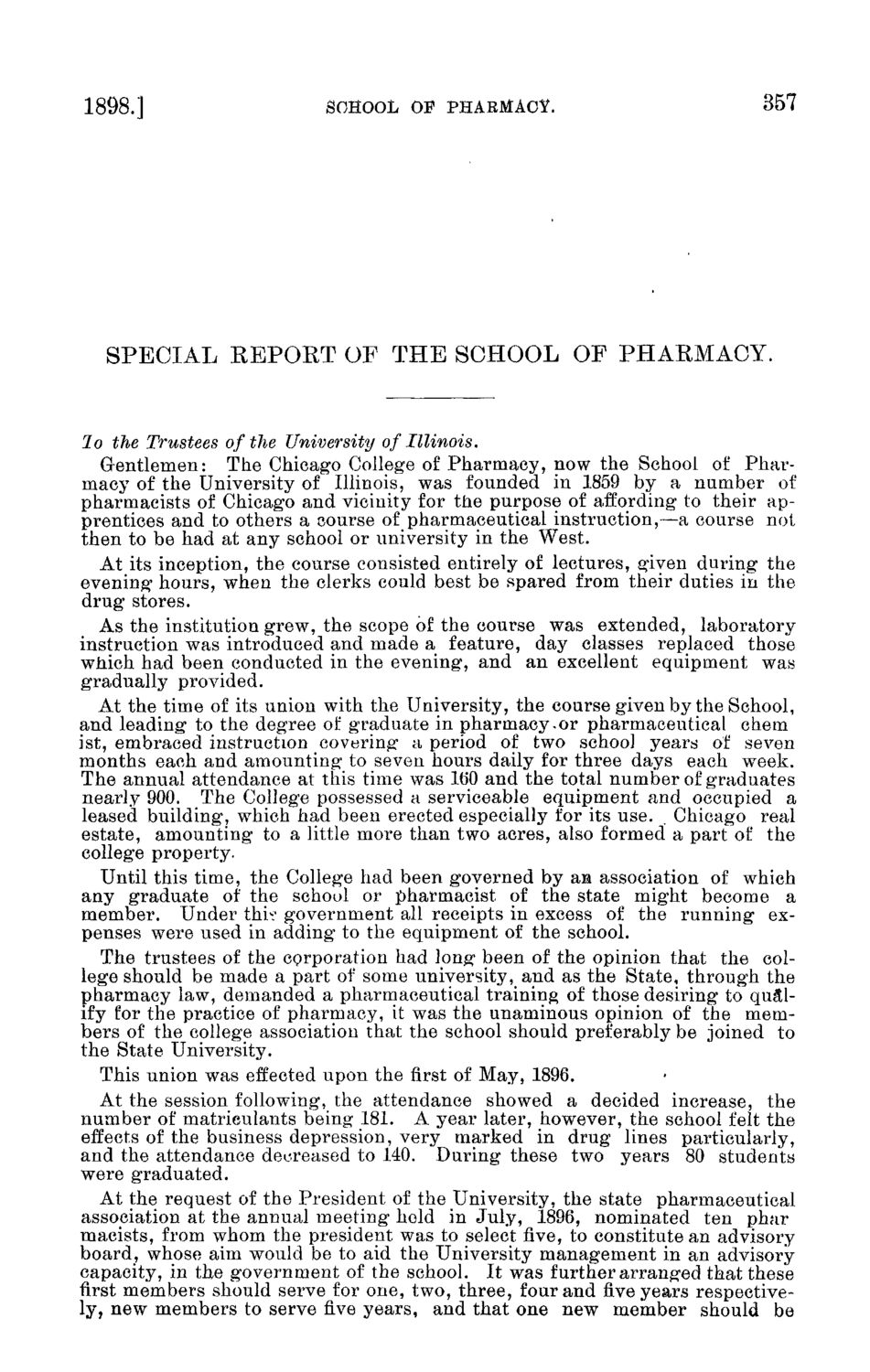| |
| |
Caption: Board of Trustees Minutes - 1898
This is a reduced-resolution page image for fast online browsing.

EXTRACTED TEXT FROM PAGE:
1898.] SCHOOL OF PHARMACY. 357 SPECIAL REPORT OF THE SCHOOL OF PHARMACY. lo the Trustees of the University of Illinois. Gentlemen: The Chicago College of Pharmacy, now the School of Pharmacy of the University of Illinois, was founded in 1859 by a number of pharmacists of Chicago and vicinity for the purpose of affording to their apprentices and to others a course of pharmaceutical instruction,—a course not then to be had at any school or university in the West. At its inception, the course consisted entirely of lectures, given during the evening hours, when the clerks could best be spared from their duties in the drug stores. As the institution grew, the scope of the course was extended, laboratory instruction was introduced and made a feature, day classes replaced those which had been conducted in the evening, and an excellent equipment was gradually provided. At the time of its union with the University, the course given by the School, and leading to the degree of graduate in pharmacy.or pharmaceutical chem ist, embraced instruction covering a period of two school years of seven months each and amounting to seven hours daily for three days each week. The annual attendance at this time was 1(50 and the total number of graduates nearly 900. The College possessed a serviceable equipment and occupied a leased building, which had been erected especially for its use. , Chicago real estate, amounting to a little more than two acres, also formed a part of the college property. Until this time, the College had been governed by aia association of which any graduate of the school or pharmacist of the state might become a member. Under thi? government all receipts in excess of the running expenses were used in adding to the equipment of the school. The trustees of the corporation had long been of the opinion that the college should be made a part of some university, and as the State, through the pharmacy law, demanded a pharmaceutical training of those desiring to qualify for the practice of pharmacy, it was the unaminous opinion of the members of the college association that the school should preferably be joined to the State University. This union was effected upon the first of May, 1896. At the session following, the attendance showed a decided increase, the number of matriculants being 181. A year later, however, the school felt the effects of the business depression, very marked in drug lines particularly, and the attendance decreased to 140. During these two years 80 students were graduated. At the request of the President of the University, the state pharmaceutical association at the annual meeting hold in July, 1896, nominated ten phar macists, from whom the president was to select five, to constitute an advisory board, whose aim would be to aid the University management in an advisory capacity, in the government of the school. It was further arranged that these first members should serve for one, two, three, four and five years respectively, new members to serve five years, and that one new member should be
| |